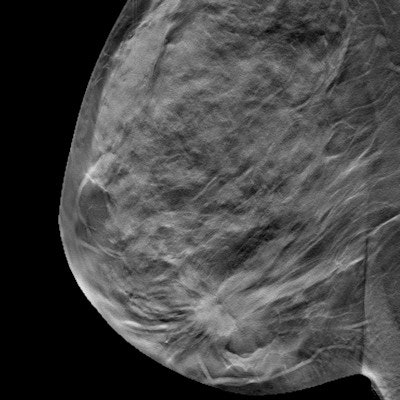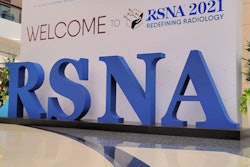
Digital breast tomosynthesis (DBT) detected nearly twice as many cancers as conventional digital mammography in community practice settings, according to research published September 15 in the American Journal of Roentgenology.
A team led by Dr. Helena Regen-Tuero from Brown University also found that screening DBT had a higher positive predictive value than mammography. Patients were younger at cancer diagnosis when screened with DBT, and cancers detected on DBT were found to be more often invasive, classified as grade 1, and node-negative.
"These findings support the generalizability of insights into DBT-based screening, which previously have been investigated primarily in academic settings," said Regen-Tuero and colleagues.
DBT continues to grow in popularity as a tool for breast imaging, with research highlighting its ability to improve cancer detection rates and lower recall rates. Research has also shown that DBT increases the detection of invasive cancers.
However, the clinical significance of the additional invasive cancers detected on DBT and their effect on patient outcomes are currently unknown. Recent studies have compared tumor biology in cancers detected using DBT versus those found on digital mammography.
However, Regen-Tuero and colleagues said results from these studies may not generalize to the community setting because they were conducted at academic medical centers, which may lack heterogeneity among interpreting radiologists.
"The increased cost associated with large-scale DBT use in the community makes it all the more important to assess its benefits," co-author Dr. Shruthi Ram from Brown University told AuntMinnie.com.
The team wanted to compare DBT and digital mammography in terms of screening performance and tumor characteristics of screen-detected cancers in a community practice setting.
The group gathered data from 47,096 screening DBT examinations and 83,200 screening digital mammography examinations collected between 2012 and 2019. Imaging interpreters included 21 breast radiologists and five general radiologists. A total of 310 cancers were detected, 161 from DBT and 149 from mammography.
| DBT vs. digital mammography for breast screening in community practice | |||
| Digital mammography | DBT | p-value | |
| Cancer detection rate (per 1,000 women) | 1.8 | 3.4 | < 0.001 |
| Positive predictive value | 2.1% | 3.5% | < 0.001 |
| Average age of detection | 64 years | 61 years | 0.02 |
DBT also found more invasive cancers than mammography did in the study. Out of the 161 cancers detected on DBT, 137 (85.1%) were found to be invasive, compared with the 108 of 149 (72.5%) mammography-detected cancers.
Thirty-eight of the DBT-detected invasive cancers (27.9%) were grade 1, compared with 19 detected on mammography (17.8%). Meanwhile, 92.2% of DBT-detected invasive cancers were node-negative, compared with 78.4% detected on mammography.
Cancers detected by DBT and digital mammography were not found to be significantly different in histologic subtype, molecular subtype, or average size.
Ram told AuntMinnie.com that more studies with detailed cost-benefit analysis of DBT use in the community are needed, as well as studies on the effect of DBT on interval cancer rate and breast cancer mortality outcomes.
"There are ongoing efforts to compare interval cancer rates between digital mammography and DBT by cross-linking with the state's tumor registry," Ram said. "We are also working on a more detailed analysis of DBT benefits by comparing performance measures, specifically cancer detection rate, and recall rate, by age group and screening round."




















